The Heritage of the Black Church
The Black Church – the Emblem of Brașov
An inexhaustible source of inspiration for us, for the city and for the visitors arriving from all over the world, our heritage includes historical and architectural monuments, libraries, archives, literature, music, traditions and customs. Valuable paintings and sculptures, Ottoman textiles, colorful pewages and wonderful organs await to be discovered.
The Black Church is our community and our city’s most iconic monument. Other historical monuments of national and universal value, dating back to the period between the 14th and the 19th centuries, are also part of the community’s heritage: the buildings surrounding the Black Church, such as the „Johannes Honterus” High School, the very house which once hosted the famous library founded by Johannes Honterus in the 16th century, or the old parish house from the 14th century, along with the house situated in main square at no. 16, with its spectacular murals dating from the 17th and 18th centuries. The community owns another medieval church and two baroque churches, all of them surrounded by historical cemeteries. They all are included on the A-list of the Ministry of Culture’s List of Historical Monuments.
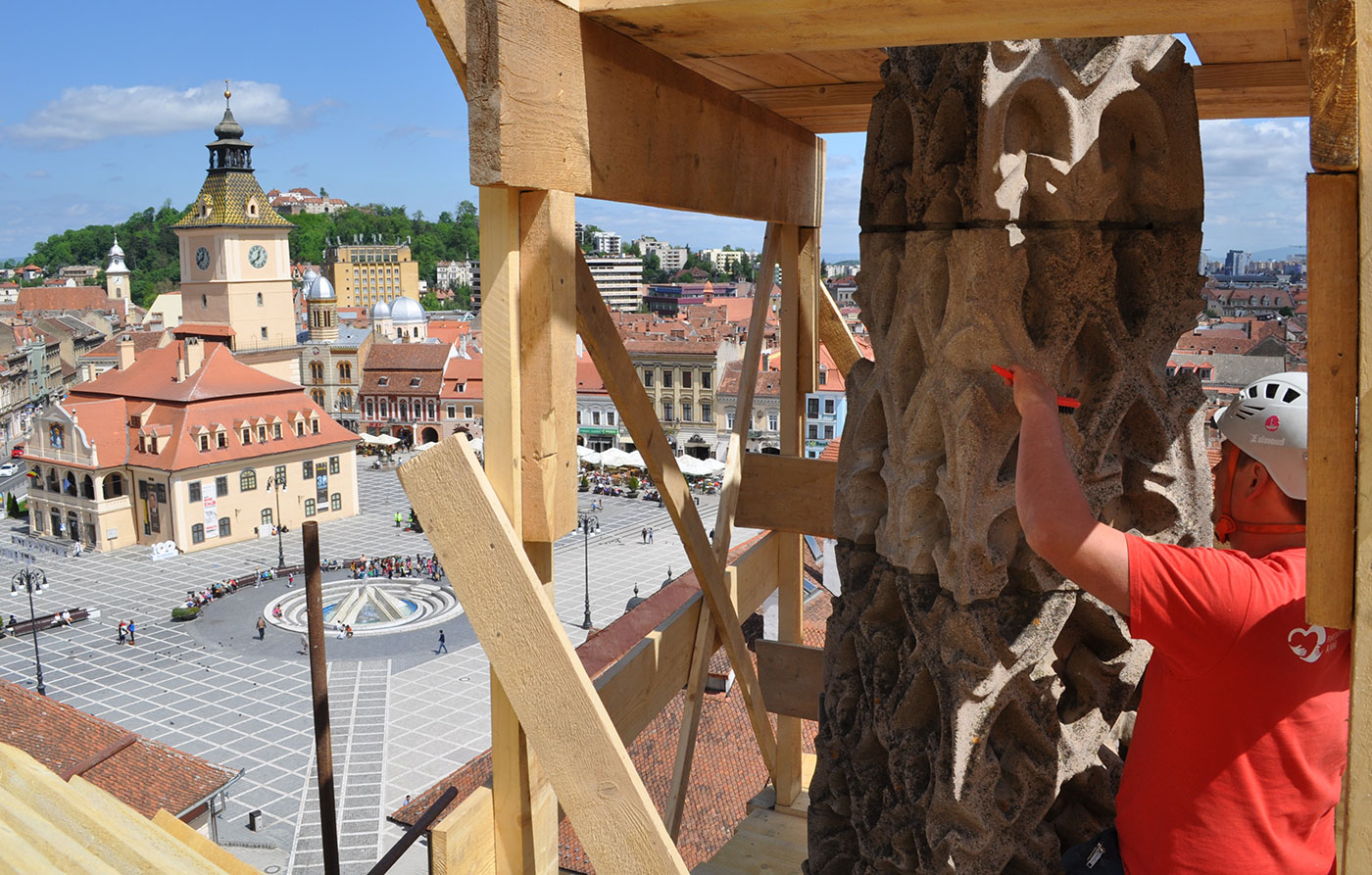
The cleaning of a pinnacle crowning one of the Black Church’s buttresses.Photo: Frank-Thomas Ziegler, 2018
The heritage also contains various ritual objects donated by our Saxon ancestors to enrich the church, to express their piety and underline their social status. Highlights are the famous collection of Oriental or Ottoman rugs, one of Europe’s richest collections, as well as our collection of medieval liturgical vestments, a portrait gallery of former parish priests and our Communion instruments.
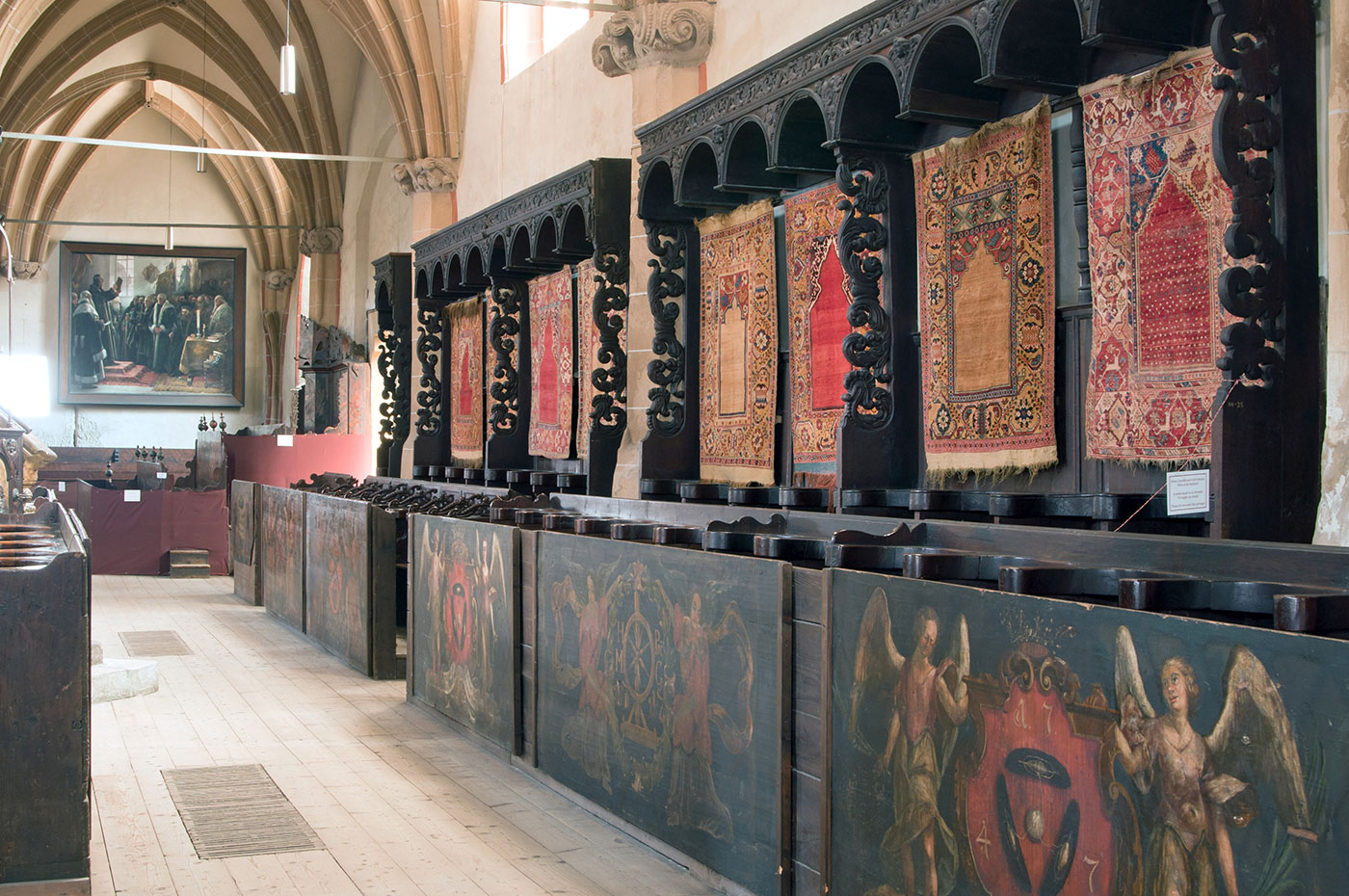
Ottoman rugs on display in the Black Church.
Photo: Árpád Udvardi, 2015
The parish manages and takes care of a valuable library and archive, whose historical roots can be traced back to the Middle Ages when the library was founded by Johannes Honterus. In this place, as well as in the musical archive, exceptional tomes and manuscripts are carefully and diligently stored, along with immaterial traditions, knowledge, and spiritual values.

A letter of indulgence decreed by Pope Sixtus IV championed the construction of the Black Church (1475). Archive of the Evangelic-Lutheran Parish A.C. of Brașov. Photo: Árpád Udvardi
Interventions on our heritage are meant to preserve the fragile beauty and authenticity of the monuments and art objects, of maintaining as much as possible from their expressiveness, which owes itself to the natural materials they are crafted from as well as the authenticity of their details. Respecting our elders’ traditions, we search for modern tendencies and carefully choose innovative methods while respecting a pious attitude towards these objects.
All across the six restoration campaigns of the Black Church that took place almost across the whole of the 20th century – starting with 1912 and spanning until 1999 – the Protestant community worked with the best experts on heritage conservation from all over Europe. Such long-term challenge means great financial expense. Therefore, the Protestant community solved the problems one by one: the rapid deterioration of the sandstone facades, the rainwater channels, the ventilation of the foundations or the heating system of the church.
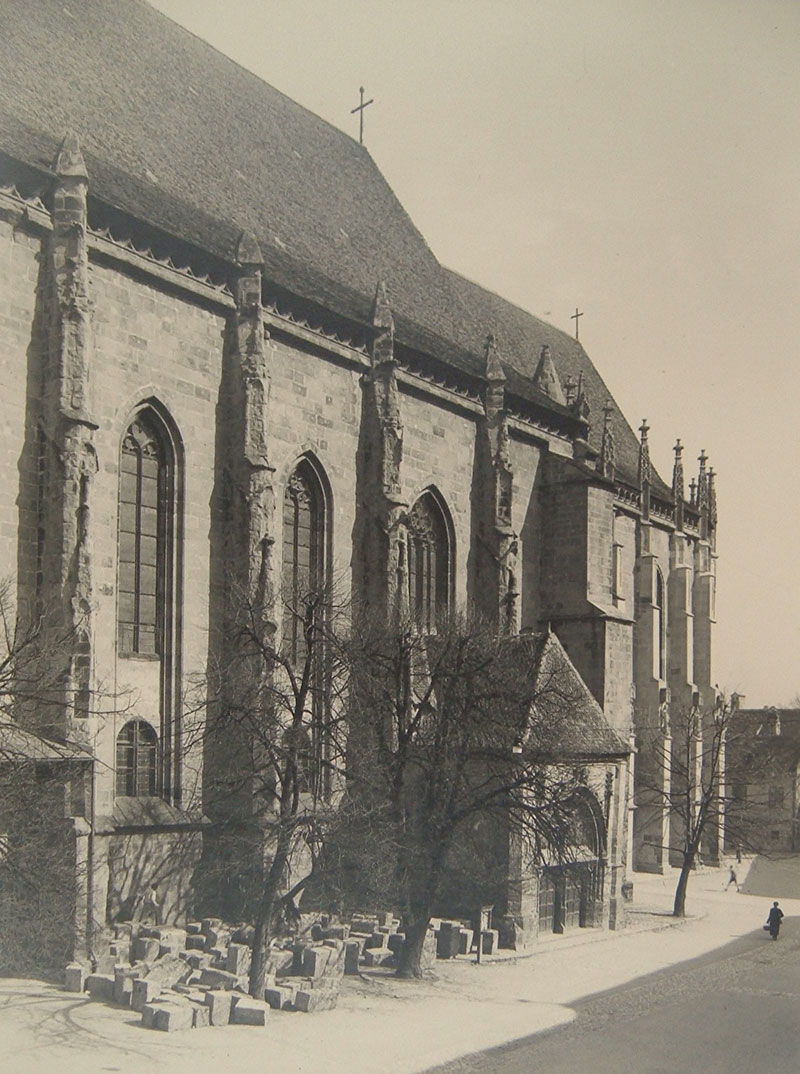
The Black Church during a restoration campaign in the ’30s. Archive of the Evangelic-Lutheran Parish A.C. of Brașov. Unknown photographer.
In the 1970s, two workshops were founded in Brașov: one focused on the restoration of the altars, the other on the restoration of textiles. Subsequently, hundreds of heritage objects from all across Transylvania were saved, their ancient brilliance being renewed and preserved.
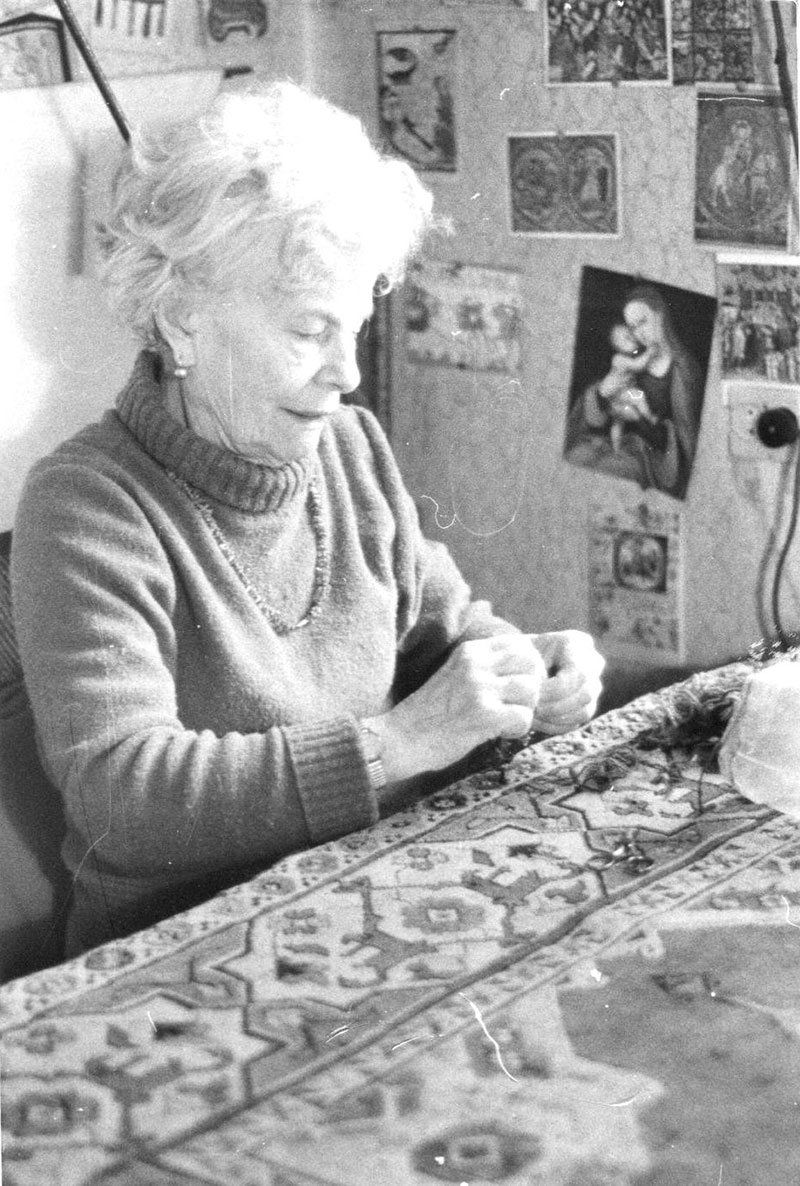
Era Nussbächer, the leader of the Ottoman rug restoration workshop at work. Photo: Waldemar Stadler, 1999
Regarding the restoration of buildings we are working on at present, we are guided by the principle of functionally complementing the original constructions in a modern way. We carefully unveil and revalue the old structures and elements of the houses, the framework, vaults, original staircases, mural paintings, as well as old floors and doors, which we recondition in order to help them regain their original beauty. In addition, we work on elements and furniture created out of materials such as wood, stone, metal, or glass. They are uniquely modern and differentiate from the originals, yet harmoniously combined.
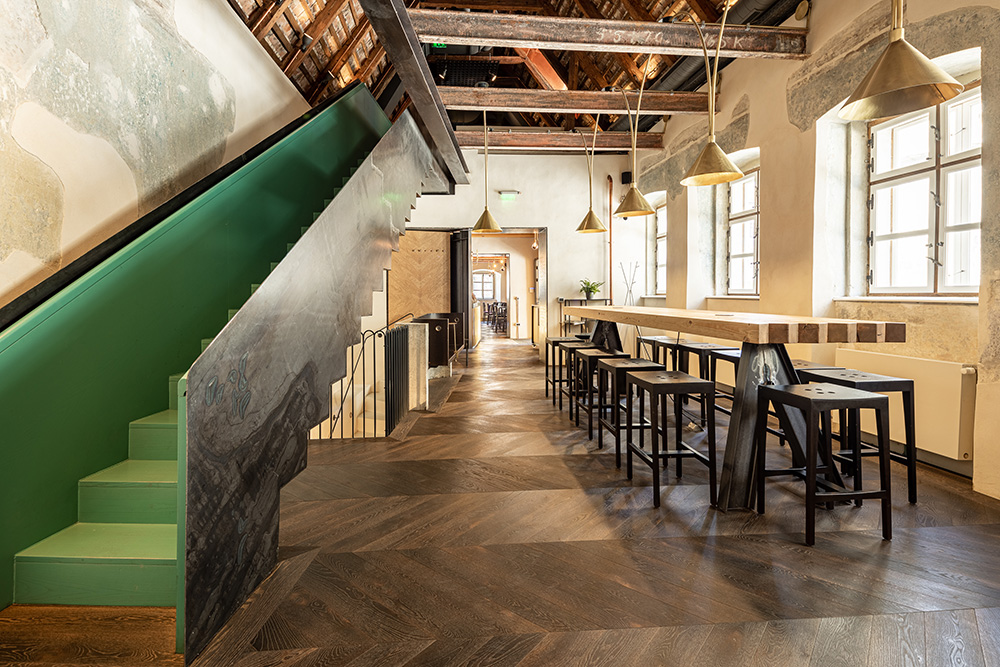
Simple and authentic: the newly-founded CH9 coffee shop, situated in the Johannes Honterus Courtyard, in a house dating from the 19th century.
Photo: Ciprian Gruia, Medias, 2019
Regarding our heritage objects, we have a completely different strategy. Since they no longer fulfill a practical function, we are striving to keep them just the same as we inherited them, only intervening to stop their deterioration. We try to preserve the object as a whole, altogether with its historical modifications and, in some cases, with its deteriorations. We belief that each of these reflects the object’s history, the thoughts and religious convictions of the people who used it. Flecks of wax or ink or worn-off patches of plush, for example, tell us about the specific way a rug used to be handled in the past. A gothic chalice equipped with a baroque stem or even the thread used to sew a garment are precious testimonies of the times when these objects were frequently used, but also of the ways they were cared for.
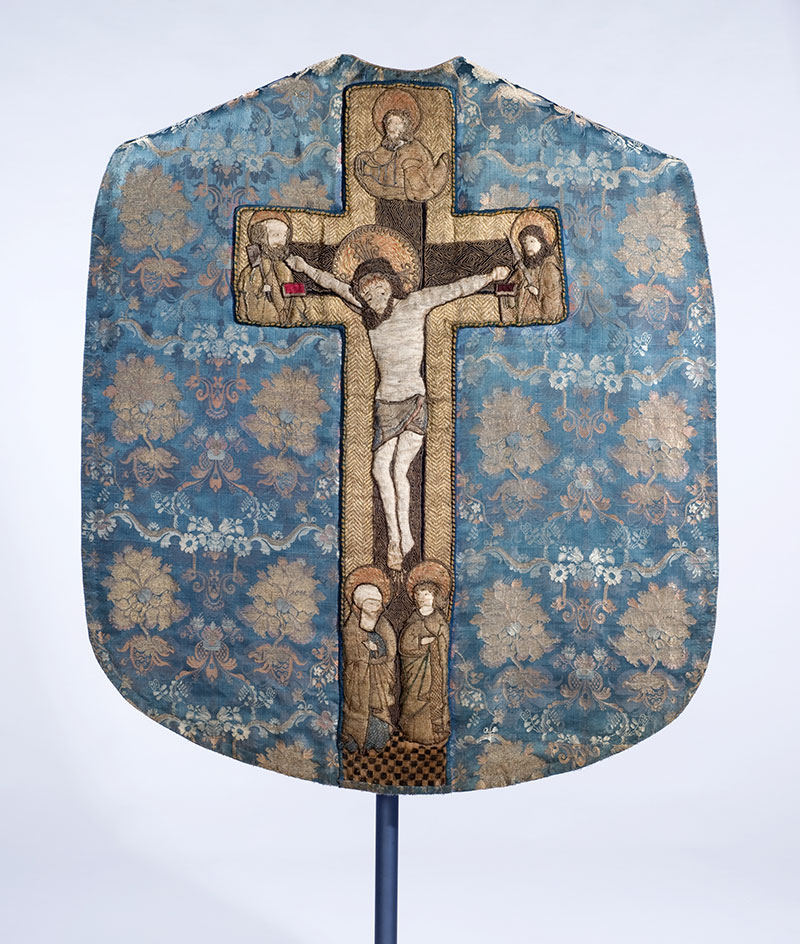
Liturgical vestment, composed out of a cross dating from the 16th century and 18th century silk fabric, displaying various traces of fraying and subsequent reparations. The Collections of the Evangelic-Lutheran Parish A.C. of Brașov. Photo: Árpád Udvardi, 2011

The valuable collection of liturgical vestments is safely deposited and can be examined without moving the objects. Photo: Frank-Thomas Ziegler, 2019
The non-invasive conservation of our collections is an important part of our efforts to preserve our heritage, making sure that every object is safely deposited and used. Such measures have already been taken in our historical archive and library, as well as in the rug and painting collections.
Many experts from various fields of work and countries support us in this beautiful and exciting craft of conserving cultural heritage. We appreciate the traditional craftsmen living in the region of Brașov. They are the keepers of ancient knowledge, which often offers the perfect approach towards restoring old
houses and preserving their decorative and functional details. We work with blacksmiths, builders, carpenters, tinsmiths, stonemasons and roofers who have not just preserved traditional knowledge about how to work with prime materials, but also maintain their passion for high-quality manual labour.
Johannes Bertleff, a young and successful architect from Brașov and a member of our community, has managed to empathically understand what the parish wishes for in terms of restoration. He succeeded in providing the restored buildings with a distinctive air of elegance by successfully combining the old and the new. The organ construction and carpentry workshop from Hărman kindly supported us many times with the restoration of our organs, with their periodic maintenance and tuning, with the manufacturing of special pieces of furniture for our storage, or locks for the doors and windows. The company’s governing principles, which combine quality and attention to detail with a passion for music, have always satisfied us.
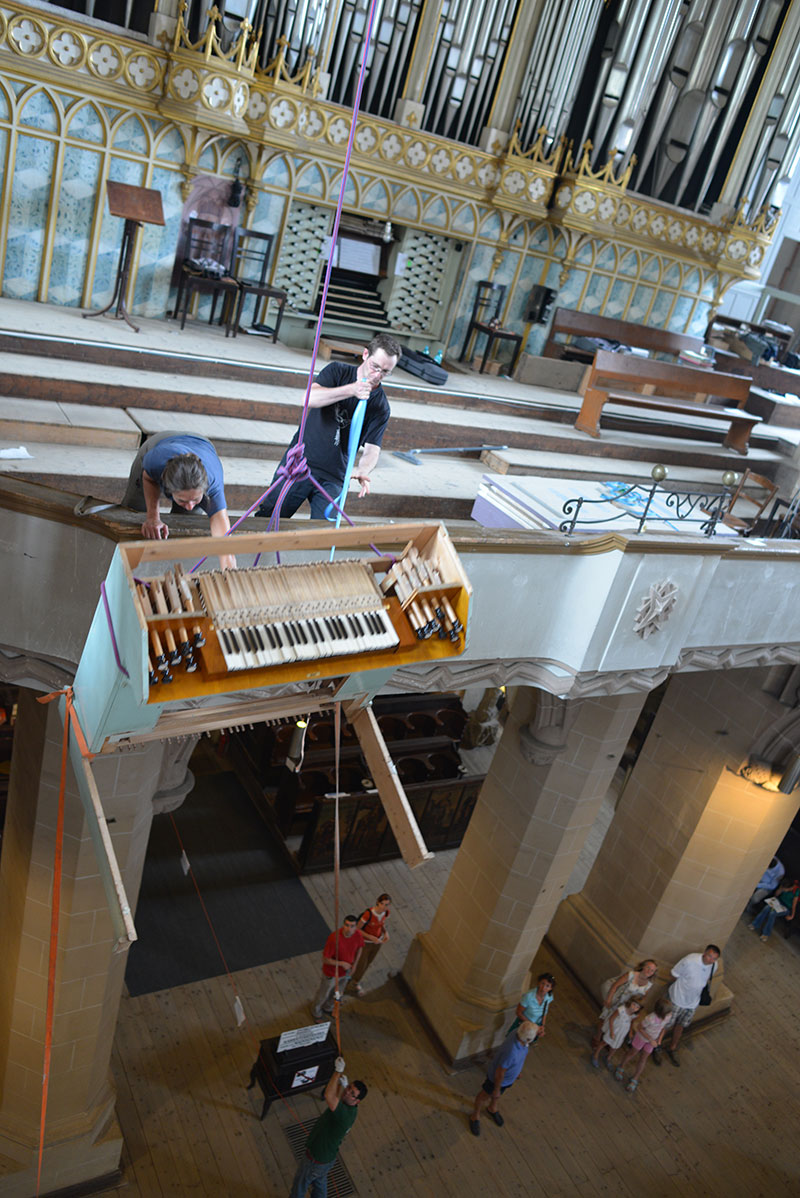
Raising the switchboard of the organ from Hamba in the western gallery of the Black Church, after the instrument’s restoration. Photo: Steffen Schlandt, 2013
Aside from these local craftsmen, we keep in close contact with conservators specialized in restoring wood and furniture, paintings, stone and textiles from across the country and abroad, especially those affiliated with museums in Germany, Hungary, Austria, and Switzerland, who also keep and safeguard a type of heritage that is similar to the one held by the Black Church.
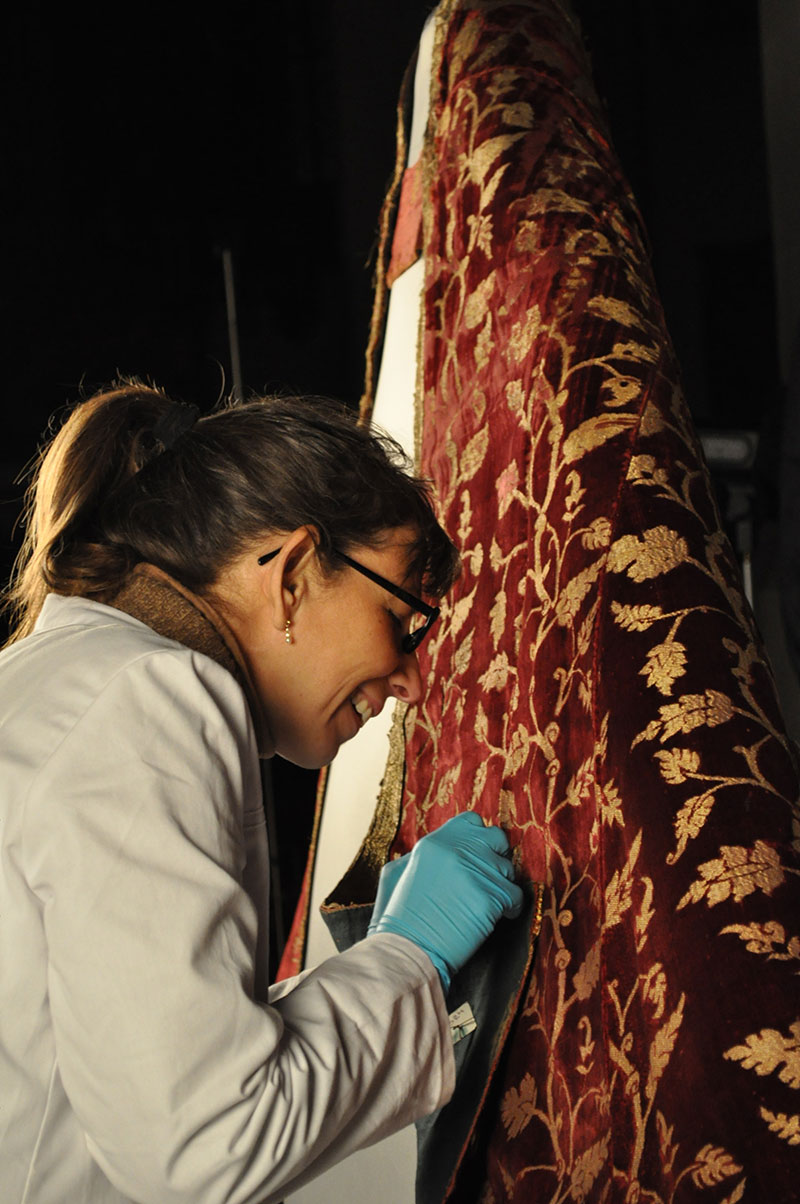
A textile restorer preparing a liturgical vestment from the 16th century to be photographed.
Photo: Frank-Thomas Ziegler, 2011





